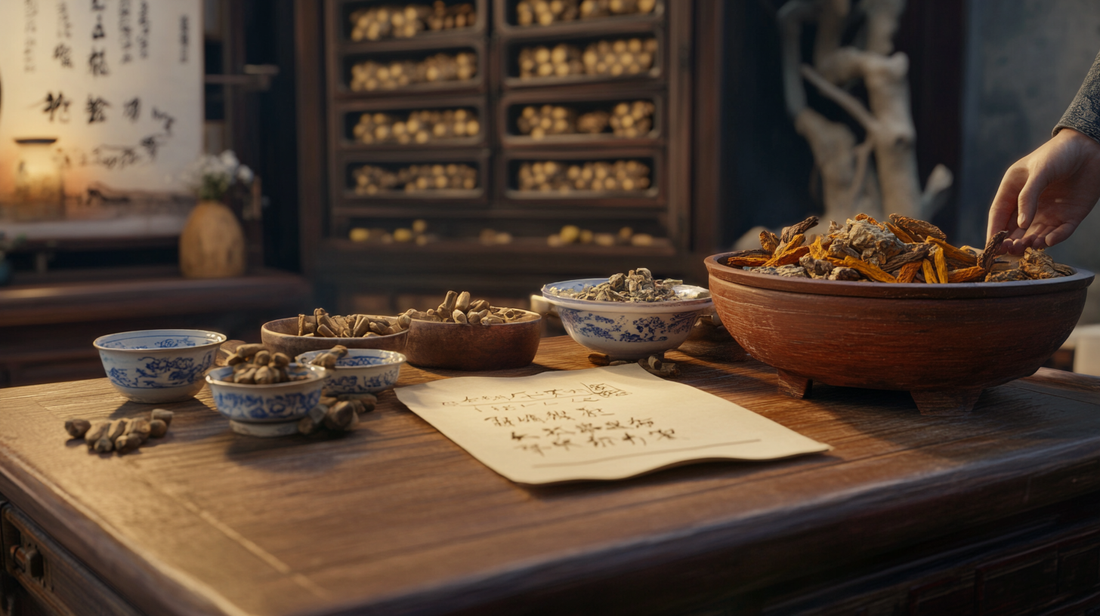
Herbal Supplements for Pain Relief: A Clinical View
Share
Introduction
Chronic pain affects millions of people worldwide, disrupting sleep, daily activity, and overall wellbeing. While conventional medications like NSAIDs and opioids can offer temporary relief, they often come with side effects or risk of dependency. At Vital Duo, we integrate Traditional Chinese Medicine (TCM) and modern herbal research to offer safer, more sustainable solutions.
Herbal supplements provide a natural way to manage pain by reducing inflammation, improving circulation, calming nerve irritation, and supporting the body's internal healing mechanisms. In this blog, we explore some of the most effective herbs for pain relief, how they work, and how they fit into a broader clinical approach.
How Herbal Medicine Approaches Pain
In TCM, pain is often seen as the result of Qi and Blood stagnation. When the flow of energy and nourishment is blocked, tissues become tense, inflamed, or deprived of healing support. Herbal therapy aims to:
- Move Qi and Blood
- Clear Heat and reduce inflammation
- Nourish deficiencies contributing to chronic pain
- Calm the Shen (spirit) when emotional stress aggravates physical symptoms
Modern herbal research also confirms that many traditional herbs exhibit anti-inflammatory, analgesic, and neuroprotective properties, providing a dual perspective on their efficacy.
Journal of Ethnopharmacology (2022): Herbal therapies reduce inflammatory markers like TNF-alpha and IL-6, improving chronic pain outcomes.
Top Herbal Supplements for Pain Relief
Corydalis (Yan Hu Suo)
Corydalis is one of the most powerful natural analgesics in Chinese herbal medicine. It works by blocking pain receptors in the brain and promoting smooth Qi flow throughout the body.
Clinical studies have shown that Corydalis can provide pain relief comparable to morphine, without the addictive potential. It is commonly used for headaches, menstrual cramps, musculoskeletal pain, and nerve pain.
Turmeric (Jiang Huang)
Famous for its anti-inflammatory effects, turmeric is widely used both in TCM and Western herbalism. The active compound, curcumin, reduces inflammation at the cellular level and supports healthy joint function.
In TCM, turmeric is also praised for its ability to invigorate Blood and unblock channels, making it especially useful for arthritic conditions and post-injury recovery.
Boswellia (Ru Xiang)
Boswellia resin, known as Frankincense in the West, has potent anti-inflammatory properties. It inhibits inflammatory pathways associated with chronic joint pain, osteoarthritis, and back pain.
In TCM, Ru Xiang is often combined with herbs like Myrrh (Mo Yao) to enhance pain-relieving and circulation-promoting effects.
BMC Complementary Medicine (2021): Boswellia extract significantly reduced knee osteoarthritis pain and improved mobility within eight weeks.
White Willow Bark
Known as "nature’s aspirin," white willow bark contains salicin, a natural precursor to synthetic aspirin. It reduces pain and inflammation, particularly in low back pain and osteoarthritis cases.
Unlike conventional NSAIDs, white willow bark tends to be gentler on the digestive tract when properly prepared.
Formulating Herbs for Clinical Pain Relief
At Vital Duo, we rarely use herbs in isolation. Instead, we design formulas that address the patient’s unique pain pattern. For example:
- Acute injuries may require herbs that move Blood and reduce swelling.
- Chronic joint pain might need herbs that nourish Liver and Kidney deficiencies.
- Nerve pain often calls for calming herbs that soothe the Shen and clear internal Heat.
Formulations are adjusted based on pulse, tongue, constitution, and emotional state to ensure optimal outcomes.
How Herbs Compare to Pharmaceuticals
While pharmaceuticals often target specific biochemical pathways, herbal therapies support the body’s broader healing systems. Herbs can:
- Modulate multiple inflammatory pathways
- Enhance tissue repair and regeneration
- Strengthen resilience to prevent further injury
Side effects are usually minimal when herbs are prescribed professionally and adjusted to individual needs. This holistic action reduces the risk of dependency and promotes long-term wellness.
Frontiers in Pharmacology (2022): Integrative herbal treatments provided superior pain relief with fewer side effects compared to NSAID-only protocols.
Patient Stories from Vital Duo
Case 1: Chronic Neck and Shoulder Pain
A 45-year-old office worker presented with chronic upper back tension and neck stiffness. We prescribed a customised formula featuring Corydalis, Turmeric, and Dang Gui. After six weeks of herbal therapy combined with acupuncture and cupping, the patient reported a 70% reduction in daily pain and improved sleep quality.
Case 2: Post-Surgical Recovery
A 52-year-old patient recovering from knee surgery was treated with Boswellia and White Willow Bark-based formulations. The combination supported faster recovery, reduced swelling, and helped manage post-operative pain without reliance on opioids.
Safety Considerations
Although herbal supplements are natural, they are not risk-free if misused. At Vital Duo, we carefully review:
- Existing medications to avoid interactions
- Digestive health and constitution
- Liver and Kidney function markers when needed
Professional guidance ensures safe, effective use tailored to each individual.
Final Thoughts
Herbal supplements offer a natural, clinically supported alternative for managing pain without the downsides of pharmaceutical dependency. By addressing both symptom and root causes—through Qi movement, inflammation control, and system support—herbs empower the body to heal more completely.
Academic References
- Journal of Ethnopharmacology. (2022). Herbal Anti-Inflammatory Strategies for Chronic Pain
- BMC Complementary Medicine. (2021). Boswellia for Osteoarthritis: Clinical Outcomes
- Frontiers in Pharmacology. (2022). Integrative Pain Management Using Herbal Medicine
